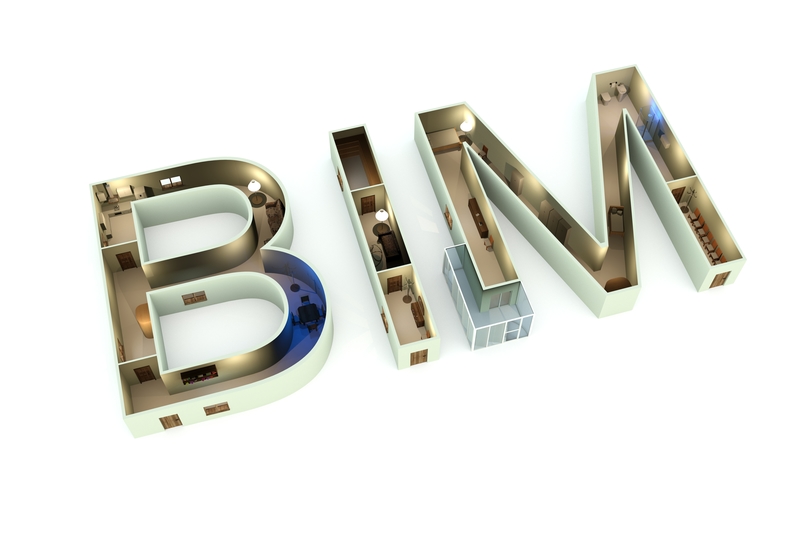The Government mandate to achieve BIM Level 2, on publicly procured projects, by April 2016 is edging ever closer.
Organisations involved in the design, construction and operation of a public building are being impacted by the information requirements inherent in meeting BIM Level 2. For designers, contractors, and the contracting supply chain, this means a more disciplined and comprehensive approach to the collection and recording of data about building assets. The Government goal is to provide asset data in a structured and recognisable format which can be transferred into a CAFM (Computer-Aided Facilities Management) system. COBie (Construction Operations Building information exchange) is the specified data format.
Whilst designers and contractors have been preparing for COBie for some time there is one community within construction which has only recently become aware of what Level 2 means for them – the manufacturers of building products. These manufacturers are the originators of the product data required in COBie and have the greatest incentive to ensure that this data – descriptive, performance, sustainability, etc., – is recorded accurately in BIM models. If it’s accurate in the BIM model it will also be accurate in COBie.
The Level 2 data required for different types of building products is now being identified through the provision of Product Data Templates (PDT) – www.bimtalk.co.uk/pdts – which manufacturers can fill out to provide data on their products (a Product Data Sheet – PDS). How this PDS data is incorporated into a BIM model can be achieved via a number of methods but most have the disadvantage of being manual, and therefore error prone, and time consuming. The most succinct method is to include this data with the geometric representation of the product – a BIM object. All manufacturers are able to produce a PDS but only a few have the skills to create geometric representations which will work well in the popular BIM modelling softwares. For this reason most manufacturers look to an outside supplier to create their geometric objects, which also include the PDS data.
Having to use an outside supplier to create geometric objects clearly has cost implications for manufacturers. Today creating objects is largely a ‘craft industry’ with a limited number of experts able to develop objects. This craft industry isn’t scalable so the large number of objects that will be required, both for 2016 and beyond, will be impossible to produce.
And with this hand-crafted approach consistency is difficult to achieve and creation costs will remain at the higher end. In this situation with a requirement for many more objects, but only a limited pool of experts, how can the needs of the construction industry and product manufacturers be met?
BIMobject® has been reviewing this conundrum for some time and concluded that the development of BIM objects has to be ‘industrialised’. This process has to include all the constituent parts of a BIM object – the geometric representation, the structured data (e.g., PDS) and any other unstructured information (e.g., PDF of installation instructions). This is a strategic focus for BIMobject in 2015. Put simply, there are two communities of manufacturers which need to be supported: those with no 3D representations of their products, and those with 3D representations produced from mechanical design CAD software. To support the former, BIMobject Mosquito™ was introduced in late 2014. A new technology which enables manufacturers to self-build and maintain place-holder BIM objects containing 3D visualisations and data properties. During this year further releases of this software will extend the range of manufactured products to which this technology can be applied. An introduction to Mosquito can be view on the YouTube channel – key ‘bimobject mosquito’ into the search criteria. For those manufacturers which already have digital representations from their mechanical CAD system then it really is a case of ‘watch this space’ for upcoming announcements from BIMobject. The aim here is really simple: convert easily and accurately what already exists into formats which can be used by different BIM modelling softwares. To keep up to date check out https://bimobject.com regularly.
Through its cloud based portal BIMobject® provides the development, maintenance and syndication of BIM objects of manufactured building and interior products. These objects are provided from the BIMobject portal, at no charge, to architects, designers, specifiers and contractors, and are available in native format for a number of the model authoring tools including ArchiCAD, Revit, SketchUp and also AutoCAD. Other formats are also available.
BIMobject was founded 3 years ago and since January 2014 has been a public company list on NASDAQ OMX. A winner in 2013 of a Global Red Herring Award, which recognises world-wide the most promising start-up companies for their innovation and technology, BIMobject is now the largest provider in Europe of BIM objects with nearly 300 manufacturers as customers, over 65,000 registered users, and with over 1,000,000 downloads from its portal. BIMobject is headquartered in Sweden with subsidiaries in France, Hungary (for Eastern Europe), Germany, Italy, UK, and with business partners elsewhere in Europe.
Alan Baikie
Managing Director
BIMobject UK














